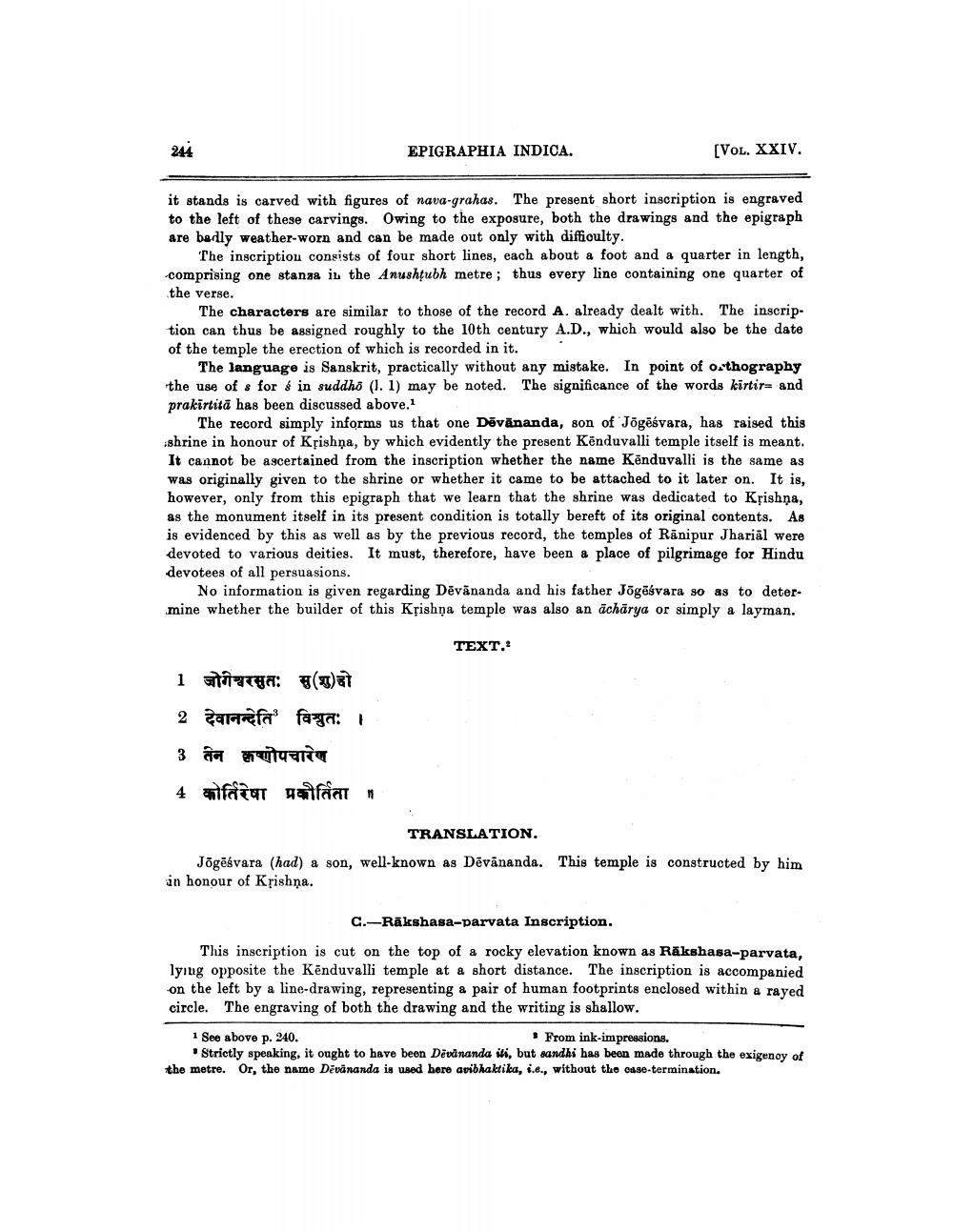________________
244
EPIGRAPHIA INDICA.
[Vol. XXIV.
it stands is carved with figures of nava-grahas. The present short inscription is engraved to the left of these carvings. Owing to the exposure, both the drawings and the epigraph are badly weather-worn and can be made out only with diffioulty.
The inscription consists of four short lines, each about a foot and a quarter in length, comprising one stanza in the Anushţubh metre; thus every line containing one quarter of the verse.
The characters are similar to those of the record A. already dealt with. The inscription can thus be assigned roughly to the 10th century A.D., which would also be the date of the temple the erection of which is recorded in it.
The language is Sanskrit, practically without any mistake. In point of orthography the use of s for & in suddho (1.1) may be noted. The significance of the words kirtir= and prakirtitā has been discussed above.
The record simply informs us that one Dēvānanda, son of Jõgēśvara, has raised this shrine in honour of Kțishņa, by which evidently the present Kēnduvalli temple itself is meant.
It cannot be ascertained from the inscription whether the name Kēnduvalli is the same as was originally given to the shrine or whether it came to be attached to it later on. It is, however, only from this epigraph that we learn that the shrine was dedicated to Krishna, as the monument itself in its present condition is totally bereft of its original contents. As is evidenced by this as well as by the previous record, the temples of Rānipur Jhariāl were devoted to various deities. It must, therefore, have been a place of pilgrimage for Hindu devotees of all persuasions.
No information is given regarding Dēvānanda and his father Jõgēsvara so as to determine whether the builder of this Kțishņa temple was also an acharya or simply a layman.
TEXT.
1 Erya: (pat 2 refa faza: 3 तेन कणोपचारेण 4 mfalat gaat
TRANSLATION.
Jõgēśvara (had) a son, well-known as Dēvānanda. This temple is constructed by him in honour of Krishna.
C.-Rākshasa-parvata Inscription.
This inscription is cut on the top of a rocky elevation known as Rakshasa-parvata, lyug opposite the Kēnduvalli temple at a short distance. The inscription is accompanied on the left by a line-drawing, representing a pair of human footprints enclosed within a rayed circle. The engraving of both the drawing and the writing is shallow.
1 See above p. 240.
From ink-impressions. Strictly speaking, it ought to have been Dēvananda iti, but sandhi has been made through the exigenoy of the metre. Or, the name Devānanda is used here aribhaktika, 1.e., without the case-termination.




